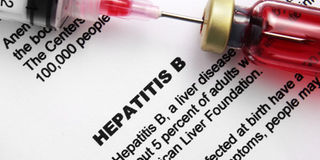Hepatitis B prevalence rate drops

What you need to know:
The drop in Hepatitis B comes as good news, especially for Karamoja, which Ministry of Health statistics placed with the highest prevalence at 24 per cent, northern Uganda at 21 per cent, West Nile at 19 per cent and Western Uganda at 10 per cent.
Kampala. Uganda has registered nearly a 6 per cent drop in Hepatitis B prevalence, State minister for Primary Health Care, Dr Joyce Moriku Kaducu, has said.
Previously, Dr Kaducu said last week, prevalence of the deadly disease, recently described by health workers as “worse than HIV/AIDS”, was estimated at 10 per cent nationally, meaning more than four million people were living with the incurable but preventable disease.
“Uganda has had a big problem as far as Hepatitis B is concerned,” Dr Kaducu said.
“However we have made a big stride in terms of treatment and vaccination. Previously, it [disease prevalence] was 10.3 per cent but the current prevalence is 4.5 per cent,” she added.
Dr Kaducu was speaking at the sidelines of a five- year aflatoxin control programme in Kampala last week. Aflatoxins are poisons produced by fungi mainly found on grains such as maize, groundnuts, millets and sorghum, among others. Recent research by Makerere University revealed that nearly half of all grains on the market are contaminated with the said poisons that also cause liver cancer, leads to stunting in children as while as damaging their brains.
The drop in Hepatitis B comes as good news, especially for Karamoja, which Ministry of Health statistics placed with the highest prevalence at 24 per cent, northern Uganda at 21 per cent, West Nile at 19 per cent and Western Uganda at 10 per cent.
The decline in prevalence was attributed to massive vaccination against the disease and its treatment.
About disease
Symptoms. Hepatitis B, according to the World Health Organisation, “is a viral infection that attacks the liver and can cause both acute and chronic disease” The virus is transmitted through contact with the blood or other body fluids of an infected person and it is estimated that 257 million people around the world are living with the disease.




